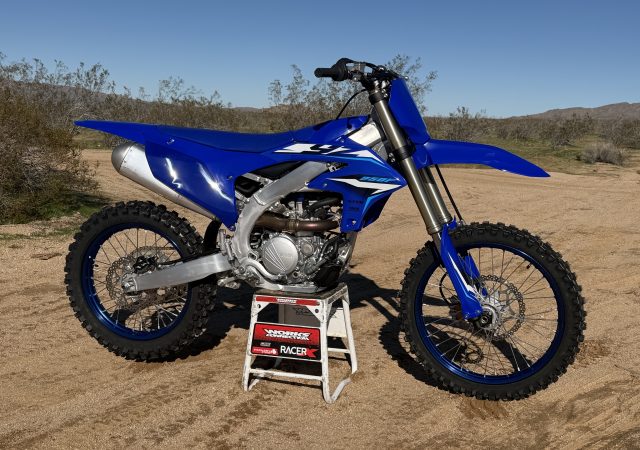
For this edition of Classic Steel, we are going to take a look back at Yamaha’s YZ250 for 1997.
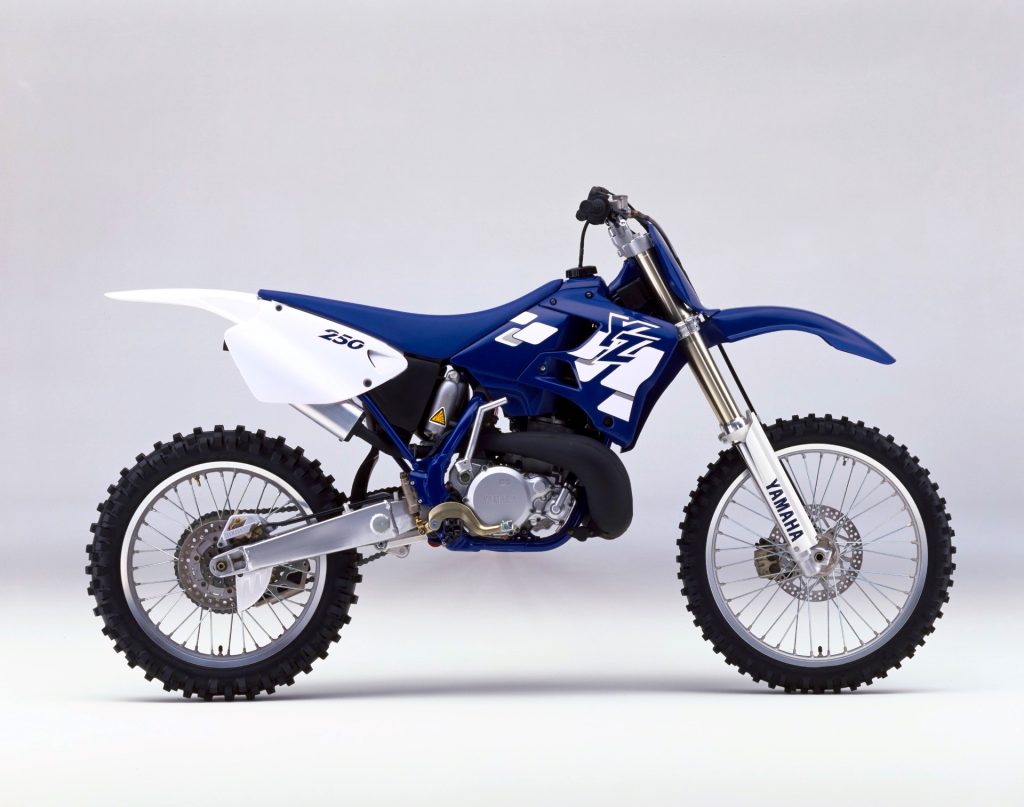 All-new in 1996, the YZ250 was more about refinement than reinvention in 1997. Photo Credit: Yamaha
All-new in 1996, the YZ250 was more about refinement than reinvention in 1997. Photo Credit: Yamaha
The 1996 season was a year of major changes for Yamaha’s venerable YZ250. Redesigned from the ground up, the all-new YZ featured sleek new plastic, beefed-up suspension, a stout new frame, and a switch from purple to deep blue for much of its bodywork. Motor changes for 1996 included a new cylinder and head, lighter piston, 38mm Keihin PWM carburetor, and redesigned exhaust. This new YZ turned out to be sleek, slim, and unfortunately, slow.
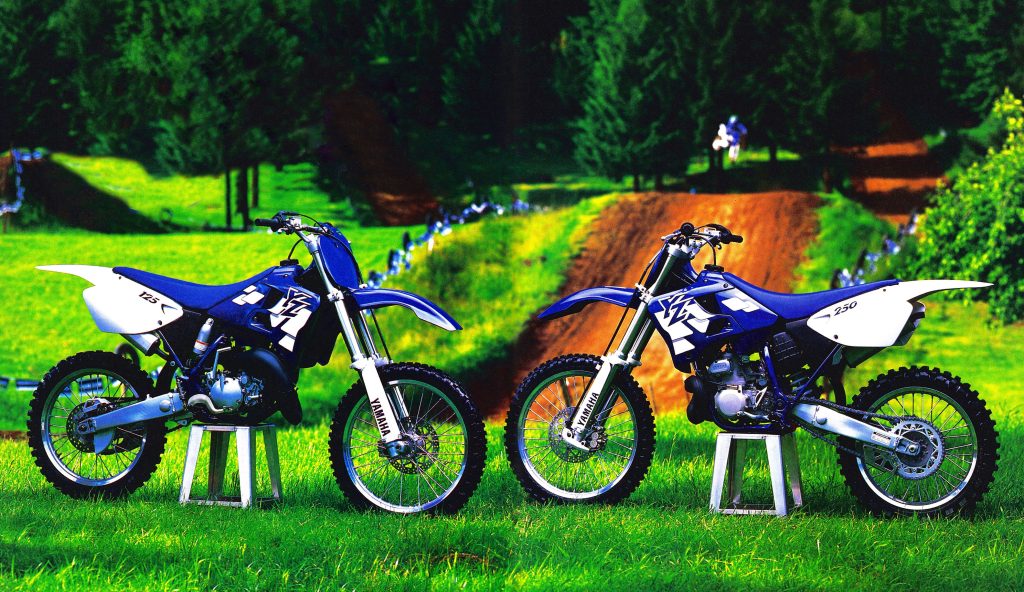 After several years of over-the-top graphical designs, Yamaha went classy in 1997 with a simple blue and white treatment that mimicked their factory machines. Photo Credit: Yamaha
After several years of over-the-top graphical designs, Yamaha went classy in 1997 with a simple blue and white treatment that mimicked their factory machines. Photo Credit: Yamaha
The new motor was easy to ride but far less powerful than the holeshot specialists Yamaha had been producing the previous two years. Riders loved the new layout, excellent brakes, great do-it-all handling, and sweet looks, but were less enthusiastic about the narrow powerband, overly soft suspension, knee brace-catching shrouds, and fragile wheels. In the end, the ‘96 YZ250 turned out to be a step forward in handling, aesthetics, and ergonomics, but a step back in power and suspension performance. It offered a solid chassis and a lot of potential, but it needed a good bit more refinement to run with the top machines in the class.
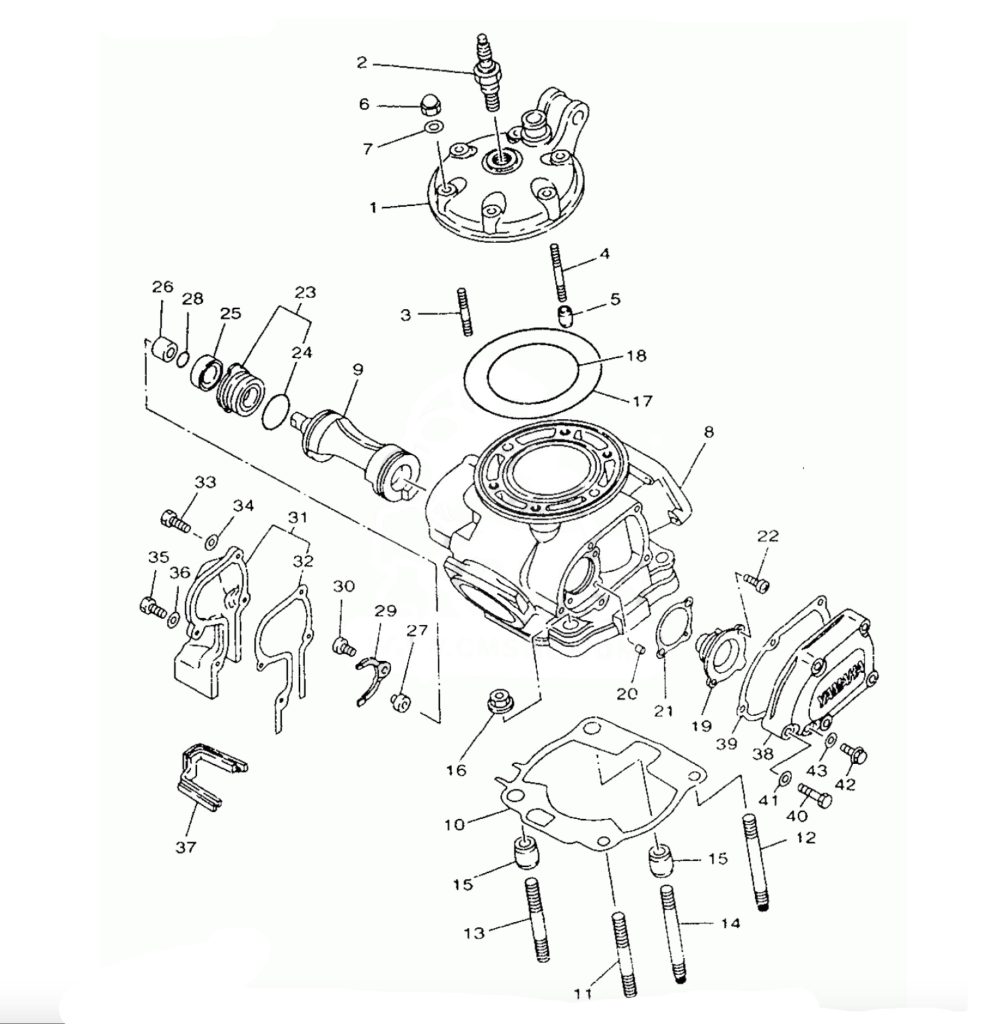 An all-new top end for 1997 featured revised porting, a redesigned head, a longer exhaust spigot, reshaped YPVS drum, and a longer intake tract. Photo Credit: Yamaha
An all-new top end for 1997 featured revised porting, a redesigned head, a longer exhaust spigot, reshaped YPVS drum, and a longer intake tract. Photo Credit: Yamaha
After the disappointing reactions the 1996 YZ250 elicited among the press, Yamaha knew they would need to bring some pizzazz back to their 250 platform if they wanted to steal back a bit of the motocross mindshare. With that as a goal, Yamaha’s engineers made horsepower their number-one priority for 1997. All-new in 1995, the YZ250’s motor was well-regarded for its power potential, but the changes made in 1996 neutered its performance. For 1997, Yamaha looked to roll back the clock and restore the potent power of previous YZs.
 In 1997, the story in motocross was Honda’s all-new aluminum framed CR250R. Unfortunately, the many improvements made to the YZ250 were largely overshadowed by the hype around Honda’s alloy wonder. Photo Credit: Honda
In 1997, the story in motocross was Honda’s all-new aluminum framed CR250R. Unfortunately, the many improvements made to the YZ250 were largely overshadowed by the hype around Honda’s alloy wonder. Photo Credit: Honda
First up on the agenda for ’97 was an all-new top end that featured new porting and a redesigned head shape. Both the exhaust and exhaust boost ports were lowered, and the intake port was decreased in size to increase intake velocity. The shape of the YPVS drum was reshaped and the governor controlling its action was retimed to open later. An all-new reed block moved from six pedals to four and repositioned the intake to sit 7mm farther back to provide a more linear low-end response. To improve exhaust scavenging the exhaust spigot was repositioned 15.5mm forward and an all-new pipe was bolted on that boosted mid to top-end performance. In the bottom end, Yamaha reshaped the transfer ports to be steeper and facilitate better scavenging. The carburetor remained a 38mm Keihin unit but a new float bowl added a separator to prevent fuel sloshing. A new ignition was bolted on with revised timing to further boost low-to-mid response. A new filter cage for ’97 added a second pin for more secure sealing.
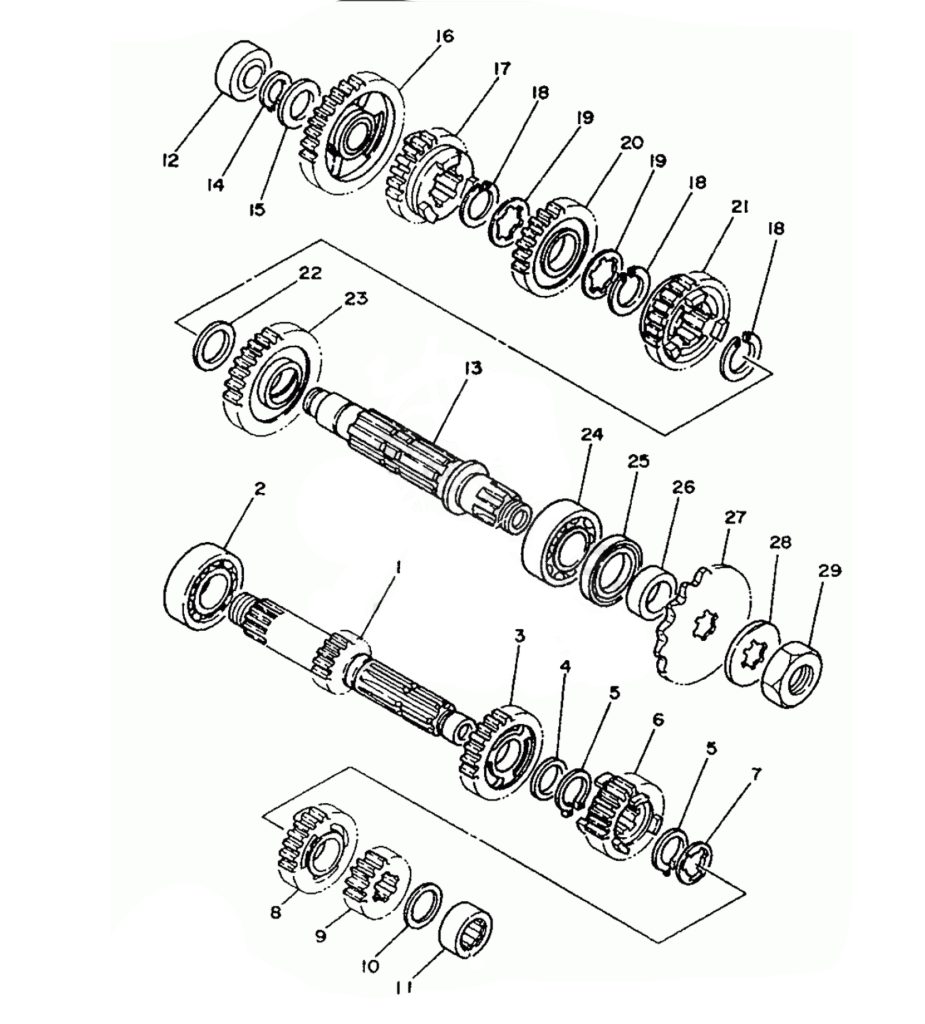 A revamped gearbox for 1997 added straight-cut gears to improve shifting performance. Photo Credit: Yamaha
A revamped gearbox for 1997 added straight-cut gears to improve shifting performance. Photo Credit: Yamaha
Long a complaint of Yamaha riders, the clutch and transmission were also upgraded for 1997. The transmission maintained the same ratios as before but featured new “straight cut” gears that were designed to offer a smoother engagement and lessen the YZ’s notoriously notchy feel. A revised clutch mechanism moved away from the ball bearing and push rod arrangement used in 1996 to a new needle bearing and thrust washer design. This was done to prevent deformation under hard use and provide a more uniform pressure within the clutch mechanism.
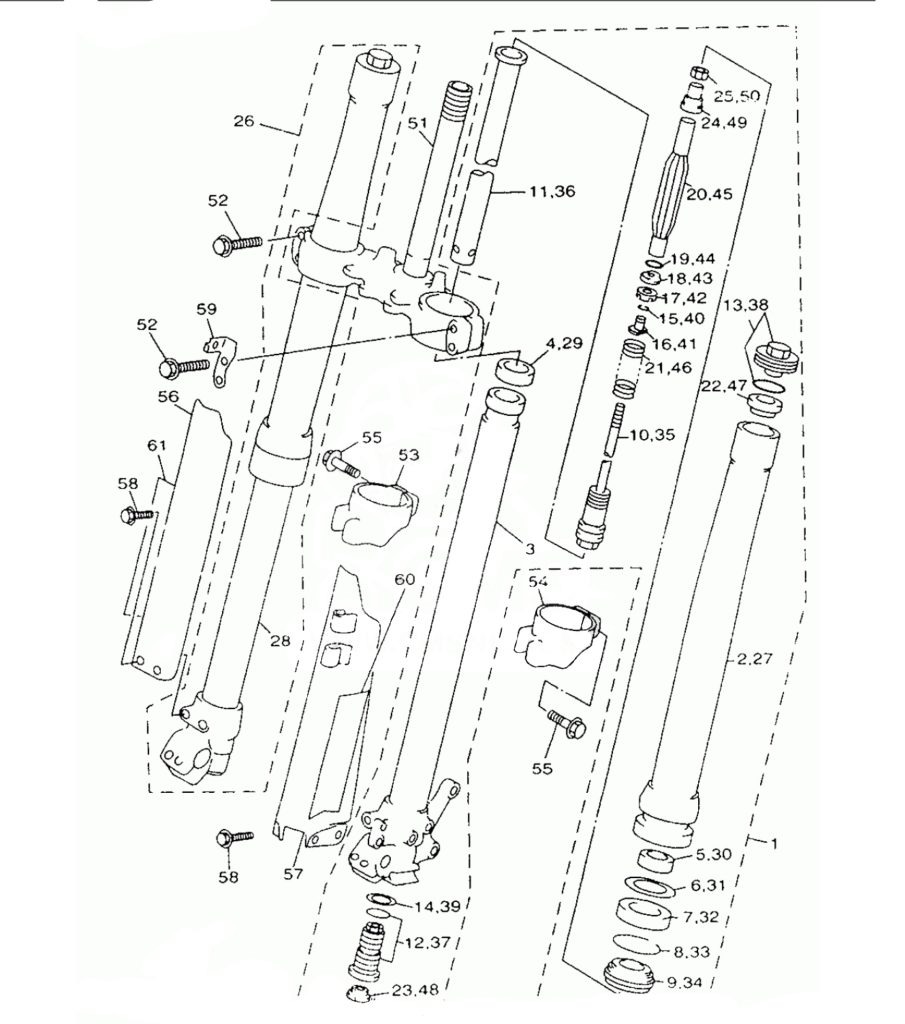 All-new forks for 1997 added a redesigned damping system and stiffer springs for improved performance. Photo Credit: Yamaha
All-new forks for 1997 added a redesigned damping system and stiffer springs for improved performance. Photo Credit: Yamaha
On the chassis front, the YZ was upgraded but not dramatically changed. The ‘97 frame maintained the basic geometry of 1996 but added a larger-diameter front motor mount, thicker steering-head gusset, and enlarged main downtube for added strength. The Monocross linkage was unchanged, but Yamaha added new poly lube bearings that were designed to provide smoother operation and longer intervals between servicing. Larger footpegs offered a wider profile for improved support and a new bar bend was wider and taller to reduce rider fatigue. All-new half-waffle grips mimicked the profile of the iconic Sunline DeGrips of the 1980s and promised to reduce blisters and improve rider comfort. Bodywork remained largely unchanged in shape aside from slightly thicker mounting points on the shrouds designed to lessen the chance of catching on knee braces. The front fender, number plate, and frame were moved to the deep blue for 1997 giving the machine a more uniform look. New graphics did away with the over-the-top color explosion of 1996 and moved to a more understated blue and white strobe effect that mimicked the look of Yamaha’s “factory” machines. Seat foam was upgraded, with a slightly firmer compound for improved comfort. Akebono continued to handle the braking duties but new rotors for ‘97 offered increased resistance to bending and improved feel at the lever through stronger mounting and smaller venting holes. Lastly, an all-new chain guide for 1997 featured thicker aluminum construction, a more durable pad material, and a new shape designed to allow the use of larger rear sprockets.
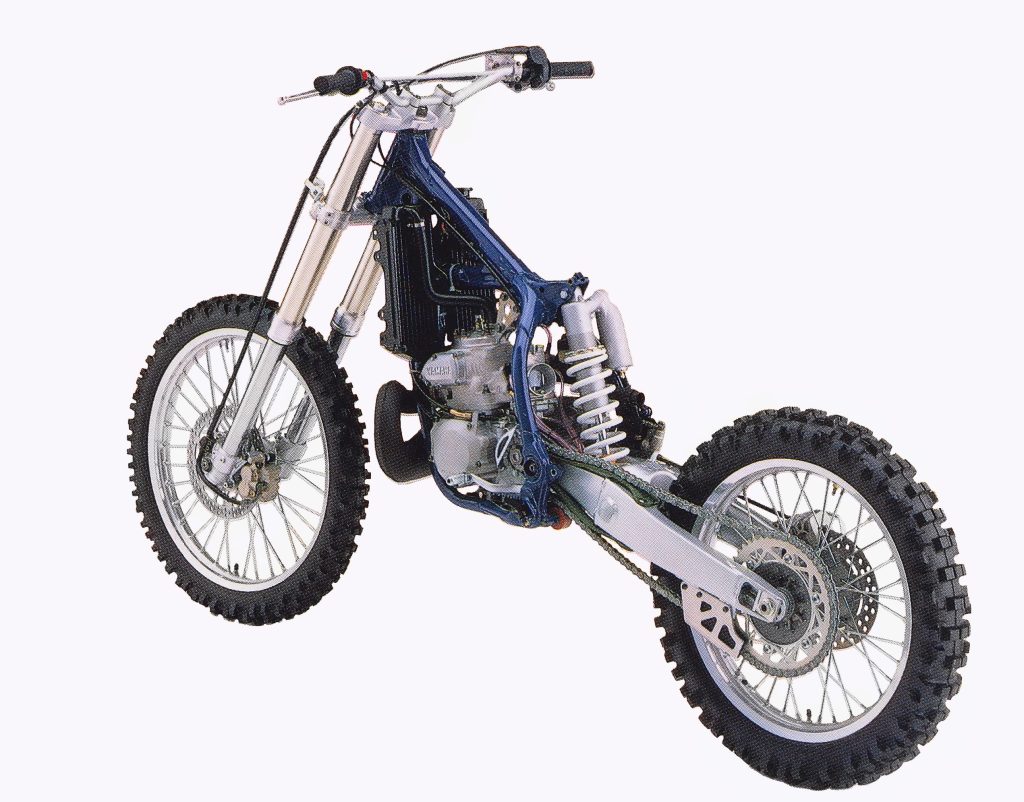 Frame changes for 1997 were limited to a beefed-up steering stem, upsized motor mount, and enlarged main frame downtube. In the rear, a stiffer spring and revised damping were added to provide improved bottoming resistance and upgraded control. Photo Credit: Yamaha
Frame changes for 1997 were limited to a beefed-up steering stem, upsized motor mount, and enlarged main frame downtube. In the rear, a stiffer spring and revised damping were added to provide improved bottoming resistance and upgraded control. Photo Credit: Yamaha
Suspension upgrades included all-new KYB forks that featured revamped valving, stiffer springs, and a redesigned “non-circulating” cartridge system for smoother operation. Travel was set at 11.8 inches with external adjustments available for compression and rebound control. In the rear, the KYB shock featured all-new valving and a firmer spring for improved bottoming resistance and enhanced control. Rear travel was set at 12.4 inches with compression and rebound being once again externally adjustable.
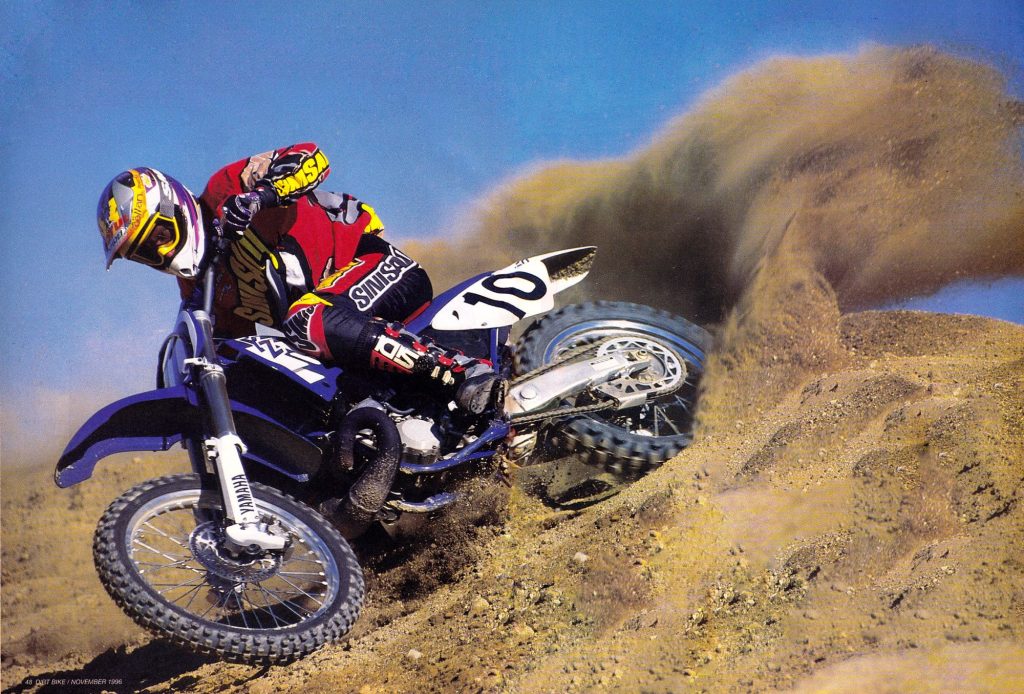 While the 1997 YZ250 was no powerhouse on the track, its excellent handling, broad powerband, and well-sorted suspension made it an attractive choice to many. Photo Credit: Dirt Bike
While the 1997 YZ250 was no powerhouse on the track, its excellent handling, broad powerband, and well-sorted suspension made it an attractive choice to many. Photo Credit: Dirt Bike
On the track, the 1997 YZ250 turned out to be a significantly upgraded motocross machine. The new motor offered a much-improved response down low and a stronger hit in the midrange. Top-end power remained lacking compared to rev-rockets like the CR250R but the YZ’s new motor was far more competitive than the year before. It was not as burly as the KX down low and not as quasar as the CR on top, but it was snappy, broad, and easy to ride. The low-to-mid powerband was always ready and the YZ put every one of its 43 horsepower right to the ground. In 1996, the YZ had been down as much as five horsepower to its competitors, but the new motor was right in the thick of things with a rating that only lost out to the Honda on the dyno. Fast guys still tended to gravitate to the Honda and Kawasaki, and the transmission remained a bit notchy, but the YZ was no longer the whipping boy of the 250 division.
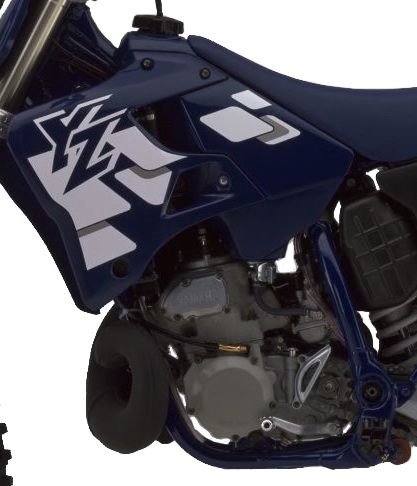 After a year of disappointing performance the YZ’s 249cc mill was back with a significantly improved powerband for 1997. The new motor provided a strong low-to-mid surge that was easy to use and very effective. Top-end performance was rather flat, but the bike was competitively fast and very good at putting all of its available power directly to the ground. Photo Credit Yamaha
After a year of disappointing performance the YZ’s 249cc mill was back with a significantly improved powerband for 1997. The new motor provided a strong low-to-mid surge that was easy to use and very effective. Top-end performance was rather flat, but the bike was competitively fast and very good at putting all of its available power directly to the ground. Photo Credit Yamaha
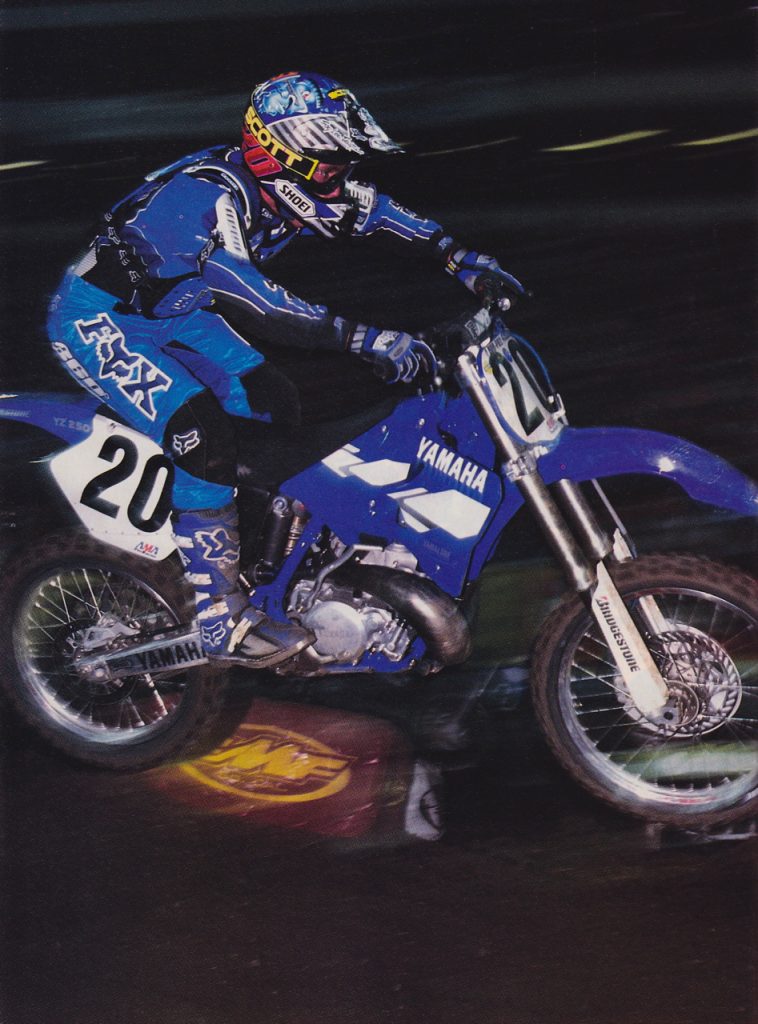 Early on in the 1997 AMA Supercross series it looked like Yamaha’s Doug Henry and his YZ250 might be the favorites for the title. Two early season victories had Henry leading the title chase when an unfortunate collision with Jimmy Button would sideline the 2-time motocross champ with a broken hand. Henry would eventually come back to close out the series with a history-making victory in the season finale on the revolutionary YZM400F four-stroke. Photo Credit: Motocross Action
Early on in the 1997 AMA Supercross series it looked like Yamaha’s Doug Henry and his YZ250 might be the favorites for the title. Two early season victories had Henry leading the title chase when an unfortunate collision with Jimmy Button would sideline the 2-time motocross champ with a broken hand. Henry would eventually come back to close out the series with a history-making victory in the season finale on the revolutionary YZM400F four-stroke. Photo Credit: Motocross Action
On the handling front, the YZ remained an excellent do-it-all machine. The chassis was not as sharp in the turns as the RM but not as wayward at speed as the CR. It was the perfect Goldilocks combination of good turning and excellent stability. The YZ never shook its head at speed and rarely put a wheel out of place. It was nearly as happy diving to the inside as it was railing the outside berm and no other machine in 1997 was as versatile in its handling as the Yamaha. For Supercross, machines like the RM had an advantage, but if you were looking for a bike that inspired confidence inside and out, the YZ was the pick of the litter.
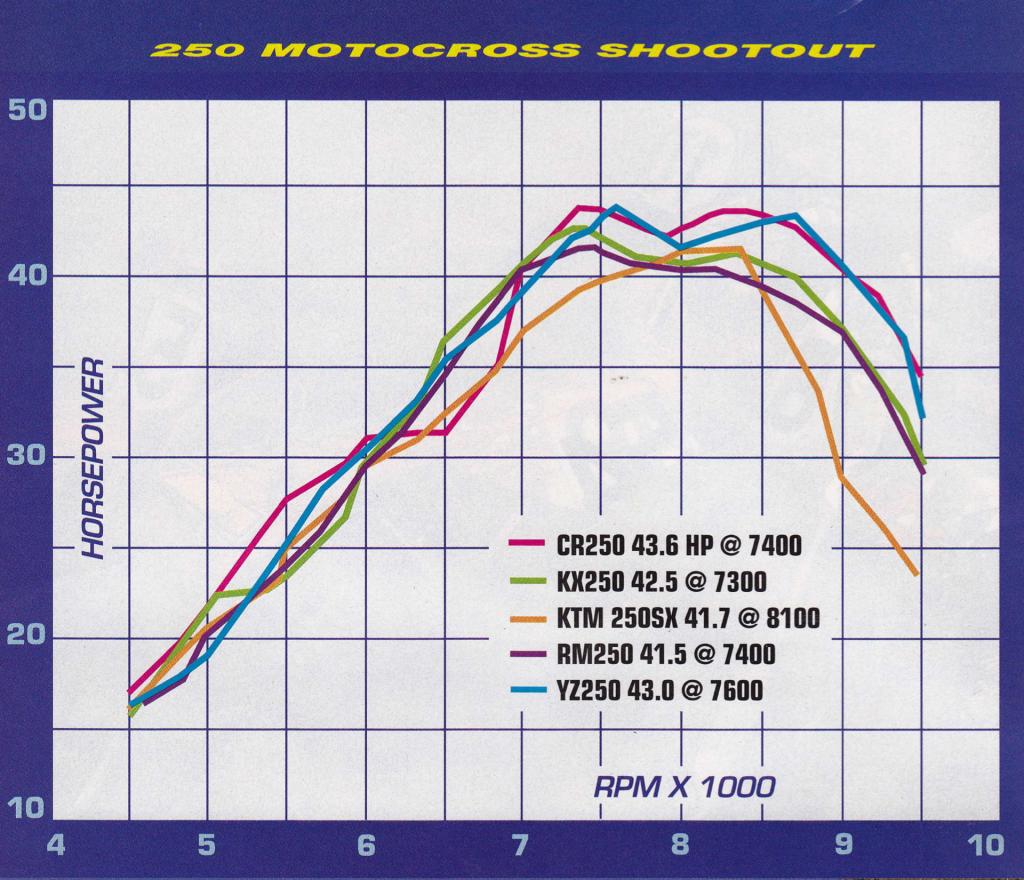 In 1996, the YZ had been the runt of the 250 litter with a power curve that gave up as much as 5 horsepower to its competitors. For 1997, extensive motor changes boosted the YZ’s fortunes considerably and leapfrogged it past every other machine but Honda’s CR250R in Dirt Bike’s dyno testing. Photo Credit: Dirt Bike
In 1996, the YZ had been the runt of the 250 litter with a power curve that gave up as much as 5 horsepower to its competitors. For 1997, extensive motor changes boosted the YZ’s fortunes considerably and leapfrogged it past every other machine but Honda’s CR250R in Dirt Bike’s dyno testing. Photo Credit: Dirt Bike
One major contributor to the YZ’s handling prowess was its upgraded suspension for 1997. In 1996, the YZ’s suspension performance had proven to be a serious handicap. The bike was saddled with overly soft settings that affected its chassis balance and made the bike a handful when pushed. In 1997, Yamaha stiffened up both ends and brought some control back to the Yamaha’s repertoire. The new forks offered much better bottoming resistance and a firmer ride, and most racers felt was a significant improvement. The forks no longer blew through their travel on hard hits and offered much better damping control. They were much more confidence-inspiring when ridden aggressively, but some riders did complain that their action was a bit harsh at low speeds. Small braking bumps and track chatter that were gobbled up by the ultra-smooth conventional forks found on the Suzuki were felt directly in the wrists of pilots on the YZ. This was more of an issue for riders planning to take their YZ away from the track, but even hard chargers noted the YZ’s relative lack of plushness compared to its green and yellow competitors.
 Fork performance was much improved for 1997 with a firmer ride and significantly upgraded control. While the new settings were much better for racing, the new forks did lack the plushness found in the Kawasaki and Suzuki’s front ends. Photo Credit: Yamaha
Fork performance was much improved for 1997 with a firmer ride and significantly upgraded control. While the new settings were much better for racing, the new forks did lack the plushness found in the Kawasaki and Suzuki’s front ends. Photo Credit: Yamaha
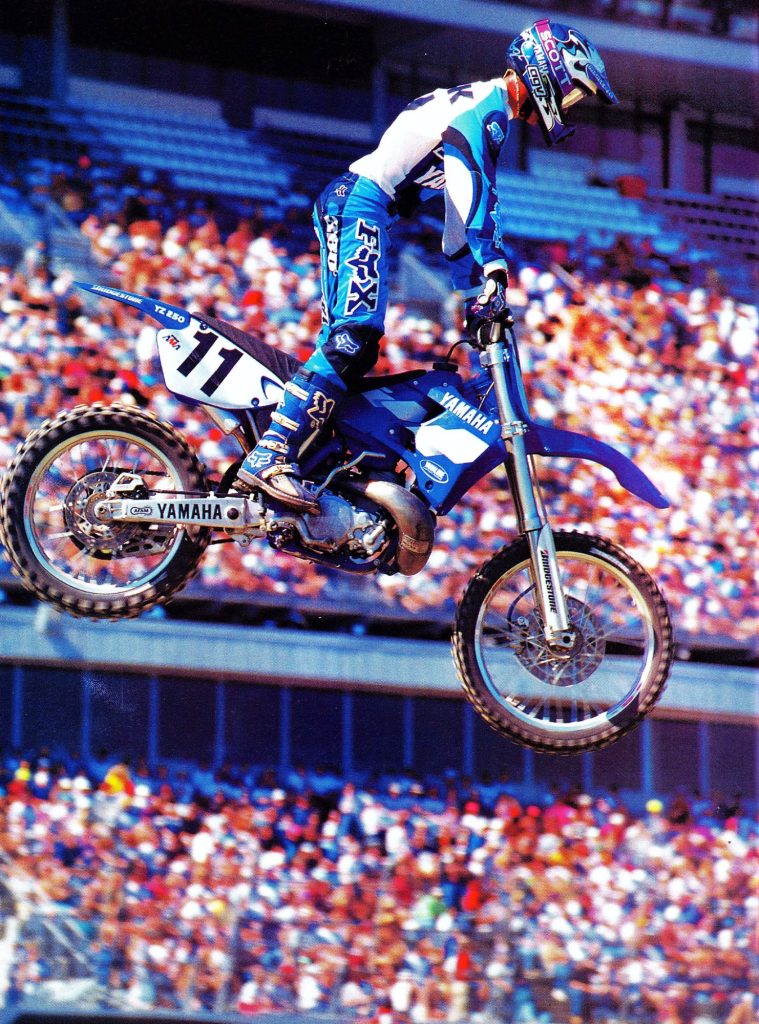 Ezra Lusk was Yamaha’s other top gun in the 250 class for 1997. Freshly signed after several years at Suzuki, Lusk adapted quickly to the blue machine, delivering Yamaha two victories and several podiums on his way to third in the final AMA Supercross standings. Photo Credit: Dirt Bike
Ezra Lusk was Yamaha’s other top gun in the 250 class for 1997. Freshly signed after several years at Suzuki, Lusk adapted quickly to the blue machine, delivering Yamaha two victories and several podiums on his way to third in the final AMA Supercross standings. Photo Credit: Dirt Bike
In the rear, the YZ was once again significantly upgraded for 1997. The new 5.2-kg/mm spring (up from a 5.0-kg/mm spring in 1996) and increased high and low-speed compression damping did a much better job of preventing the rear from sagging under acceleration and crashing to the stops on hard hits. Unlike the front, the new stiffer settings did not seem to hinder the YZ’s overall comfort, and most riders ranked it only behind the ultra-plush Kawasaki for rear-end compliance. Big hits, large whoops, and sharp curbs were all taken in stride by the YZ’s versatile rear suspension. Some riders did feel that the stock suspension was a bit unbalanced with the forks feeling softer than the shock despite their lack of plushness. This was not a fatal flaw, but everyone did agree that the shock did a much better job than the forks of combining comfort and control.
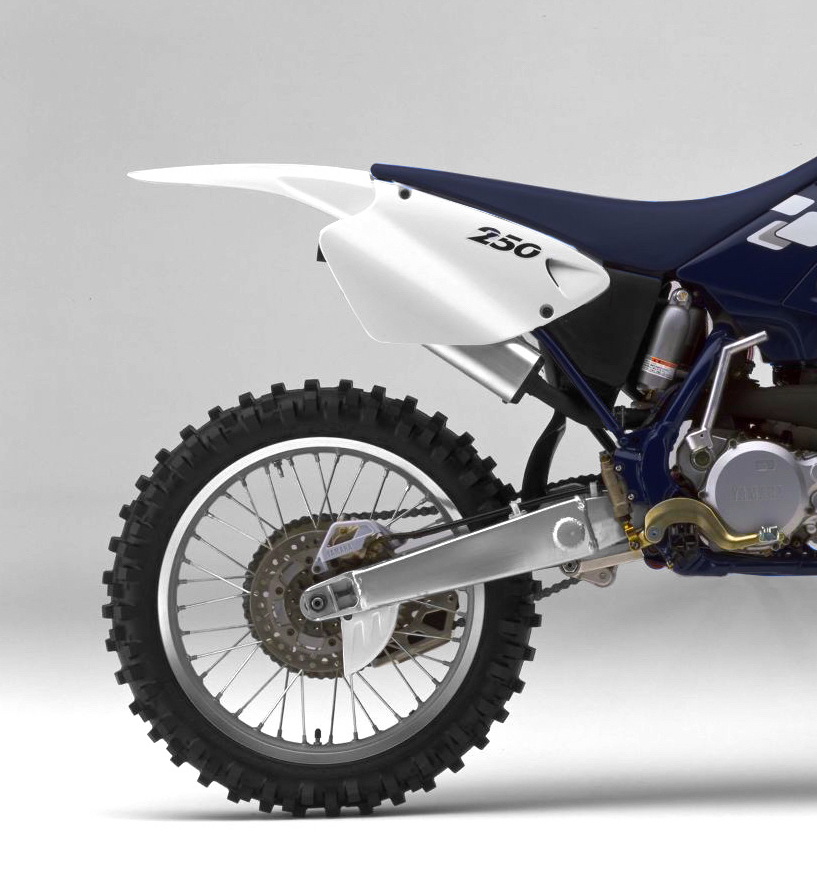 The revamped shock on the YZ250 delivered one of the most well-sorted rides in the 250 class in 1997. Photo Credit: Yamaha
The revamped shock on the YZ250 delivered one of the most well-sorted rides in the 250 class in 1997. Photo Credit: Yamaha
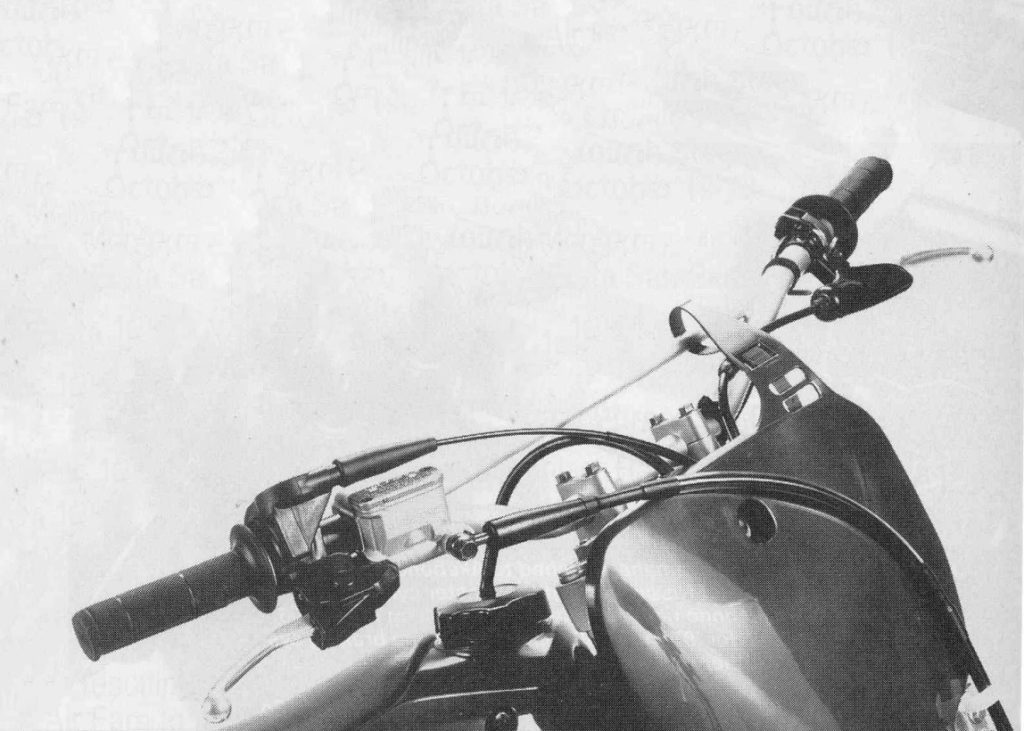 New half-waffle grips and a revised bar bend improved rider comfort for 1997. Photo Credit: Motocross Action
New half-waffle grips and a revised bar bend improved rider comfort for 1997. Photo Credit: Motocross Action
On the detailing front, the YZ was excellent in most respects. Riders loved the new half-waffle grips and praised the revamped bar bend. Those with small hands did lament their larger diameter, but overall, they were a significant improvement in comfort over previous grip designs. The Akebono brakes were super powerful and on par with the excellent Nissin components found on the CR250R. Not everyone loved the complicated but highly adjustable design of the front master cylinder, but in terms of performance, it was excellent. Most everyone loved the clean factory-style graphics and the deep blue plastic looked great when new. Unfortunately, it also showed wear more noticeably than its rivals and developed ugly white creases when bent. While this did not affect performance, it did make the YZ look old faster than the green, red, yellow, and butterscotch competition.
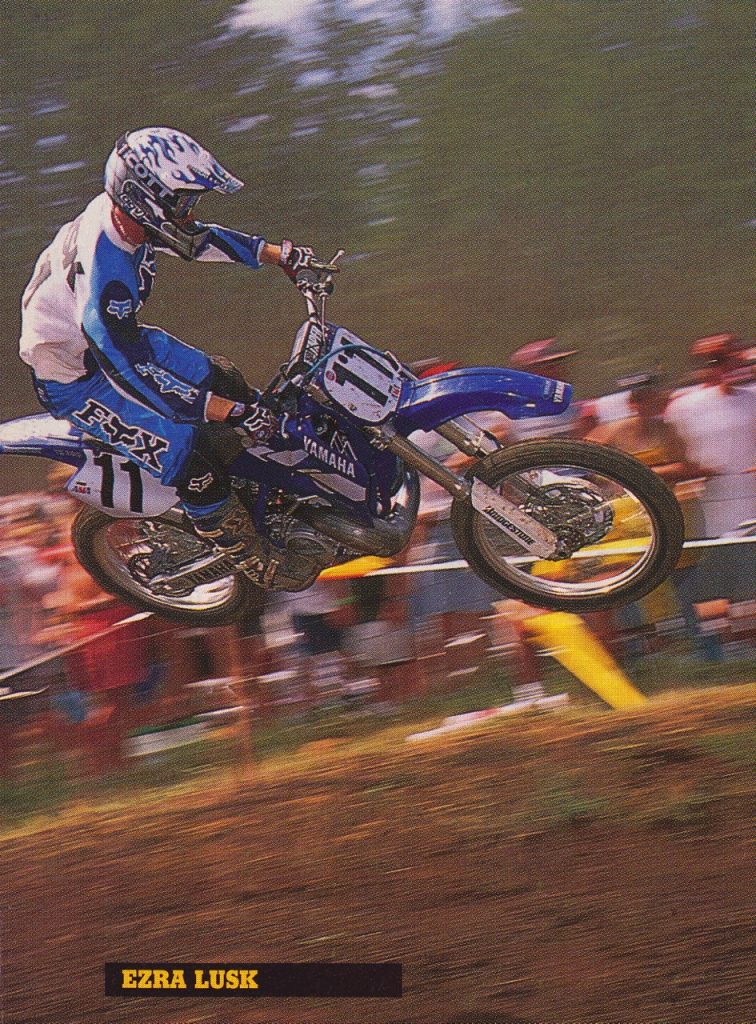 Lusk continued his success on the YZ outdoors in 1997 racking up his first 250 National Motocross victory at Budds Creek in June. Photo Credit: Motocross Action
Lusk continued his success on the YZ outdoors in 1997 racking up his first 250 National Motocross victory at Budds Creek in June. Photo Credit: Motocross Action
Short riders loved the YZ’s ergonomics, but tall guys found its Lilliputian dimensions confining. For them, a taller seat and bars were a must. Knee brace wearers also continued to do battle with the YZ’s radiator shrouds despite their thicker construction. The new wider pegs looked like Honda clones and offered excellent support. The revamped transmission offered an improved shifting feel, but the YZ retained its reputation for having the crankiest cog box in the class. The shift between first and second gear was particularly notchy and Why-Zed refused to shift under full power unless the clutch was used. This was less of an annoyance than it would have been on a 125 but riders still complained about its sometimes-reluctant engagement. Overall motor reliability was excellent with the clutch and transmission enduring lots of abuse without failure. As long as you kept the air filter clean and used good quality oil, the YZ was as bulletproof as anything available in the class.
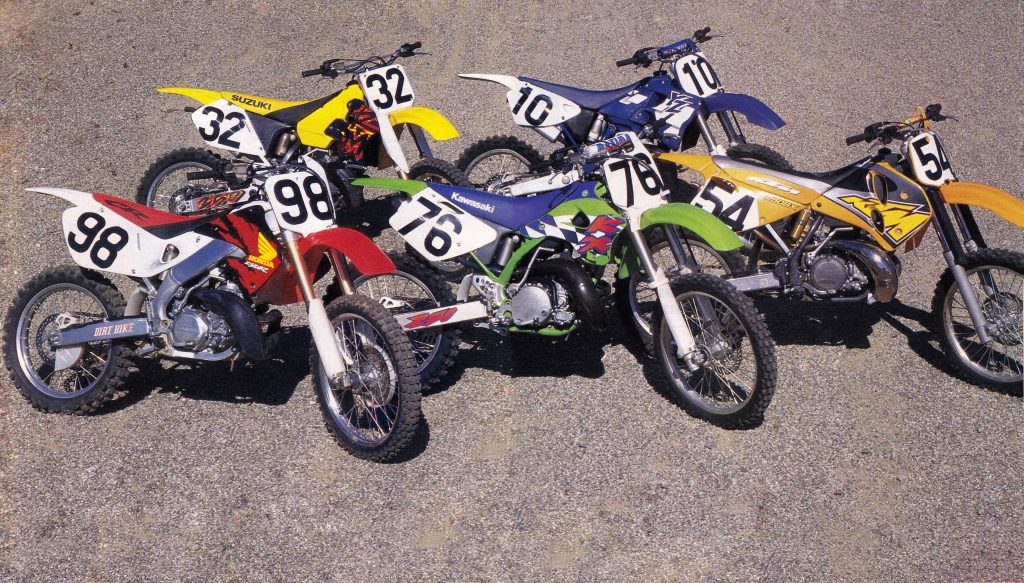 The 250 class offered a lot of performance variety in 1997. Photo Credit: Motocross Action
The 250 class offered a lot of performance variety in 1997. Photo Credit: Motocross Action
Overall, the 1997 YZ250 proved to be a solid second act for Yamaha’s next-generation YZ platform. It addressed most of the issues riders had with the ’96 machine and delivered a much more competitive racing product. It was not as fast as the Honda and not as plush as the Kawasaki, but it offered a great do-it-all package that delivered on the promise of the year before.
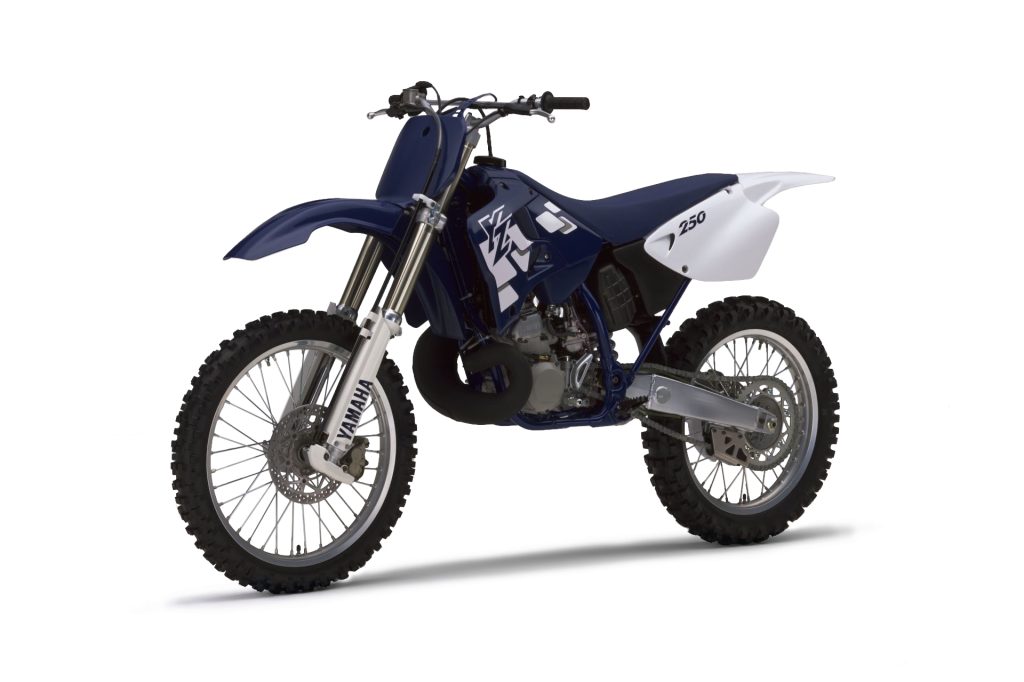 In 1997, Yamaha sanded the rough edges off of their 250 platform and delivered a highly competitive motocross machine. While not the fastest, flashiest, or most cutting-edge, the YZ’s combination of excellent handling, solid power, and capable suspension made it a winner on the track. Photo Credit: Yamaha
In 1997, Yamaha sanded the rough edges off of their 250 platform and delivered a highly competitive motocross machine. While not the fastest, flashiest, or most cutting-edge, the YZ’s combination of excellent handling, solid power, and capable suspension made it a winner on the track. Photo Credit: Yamaha
For your daily dose of classic moto goodness make sure you follow @tonyblazier on Twitter, Instagram, and Threads.


